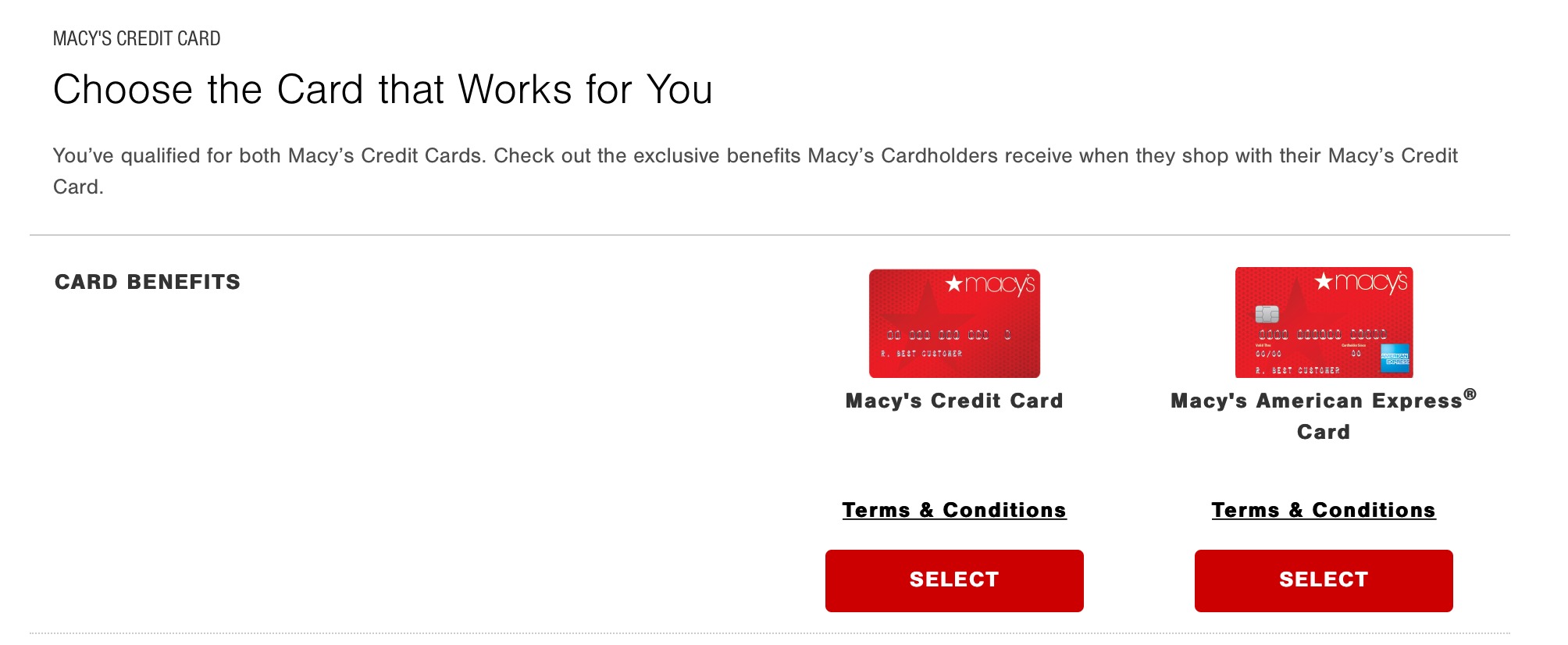

Finance
What Is Allowed Amount In Health Insurance
Published: November 12, 2023
Learn the definition of "allowed amount" in health insurance and how it impacts your finances. Discover the crucial role this term plays in managing your healthcare costs.
(Many of the links in this article redirect to a specific reviewed product. Your purchase of these products through affiliate links helps to generate commission for LiveWell, at no extra cost. Learn more)
Table of Contents
- Introduction
- Understanding Health Insurance
- Explaining Allowed Amounts
- Factors Affecting Allowed Amounts
- Determining Out-of-Network Allowances
- Importance of Understanding Allowed Amounts
- How to Calculate Your Health Insurance Allowed Amount
- Common Misconceptions About Allowed Amounts
- Negotiating with Healthcare Providers Based on Allowed Amounts
- Conclusion
Introduction
Welcome to the world of health insurance, where understanding the terminology is key to making informed decisions about your healthcare. One such crucial term is the ‘allowed amount’ in health insurance, which plays a significant role in determining the amount you will pay for medical services.
Health insurance is a valuable tool that provides financial protection against the high costs of medical care. When you have health insurance, you enter into a contract with an insurance company. This contract specifies the terms of coverage, including what services are included, how much you will pay out-of-pocket, and what portion the insurance company will cover.
The ‘allowed amount’ is the maximum amount that insurance companies are willing to pay for a specific medical service. It is based on a negotiated agreement between the insurance company and healthcare providers. This amount serves as a benchmark, and any charges exceeding the allowed amount are usually the responsibility of the insured.
Understanding how allowed amounts work is essential for making informed decisions about your healthcare. It can help you anticipate and plan for out-of-pocket expenses, as well as make decisions about which healthcare providers to choose.
In this article, we will delve into the concept of allowed amounts in health insurance, explaining how they are determined, factors that affect them, and why it is important to have a clear understanding of this term. We will also provide insights into calculating your health insurance allowed amount and tips for negotiating with healthcare providers based on this information.
So, let’s dive in and demystify the world of allowed amounts in health insurance!
Understanding Health Insurance
Before we explore the concept of allowed amounts in health insurance, it’s important to have a basic understanding of how health insurance works.
Health insurance is a type of coverage that helps individuals and families pay for medical expenses. It provides financial protection by reimbursing or directly paying for the cost of covered healthcare services. Typically, health insurance plans require individuals to pay a monthly premium, a predetermined amount that must be paid even if no medical services are used.
Health insurance plans vary in terms of coverage and cost. They may be provided by employers, private insurers, or government programs such as Medicaid or Medicare. Each plan has its own set of benefits, deductibles, copayments, and provider networks.
A deductible is the amount you must pay out-of-pocket for healthcare services before your insurance coverage kicks in. Copayments, on the other hand, are fixed amounts you pay at the time of service, such as a $20 fee for a doctor’s visit.
Networks are a key component of health insurance. Insurance companies negotiate contracts with specific healthcare providers, creating a network of doctors, hospitals, and specialists. Providers within the network have agreed to accept the insurance company’s allowed amount as full payment for covered services. These are known as in-network providers.
When you visit an in-network provider, you typically pay a lower cost for services because the insurance company has negotiated discounted rates. This is known as the negotiated rate or the allowed amount. The insurance company pays a portion of the allowed amount, and you are responsible for any remaining cost-sharing, such as deductibles or copayments.
If you choose to see a healthcare provider outside of your insurance plan’s network, they are considered out-of-network. In this case, the allowed amount may be higher, and you may have to pay a larger share of the cost.
Now that we have a basic understanding of health insurance, let’s move on to unraveling the concept of allowed amounts.
Explaining Allowed Amounts
Allowed amounts, also known as allowable charges or negotiated rates, are the maximum amount that an insurance company will pay for a specific healthcare service.
These amounts are not random but are determined through negotiations between the insurance company and healthcare providers. The negotiations take place to establish the reimbursement rates for different medical procedures, tests, medications, and other healthcare services.
Healthcare providers, including doctors, hospitals, and laboratories, submit their charges to insurance companies for reimbursement. However, insurance companies do not reimburse providers at their full billed charges. Instead, they negotiate a lower rate, which becomes the allowed amount.
The negotiation process is complex and takes into consideration factors such as average charges in the specific geographic area, the cost of providing the service, and the insurer’s ability to negotiate lower rates based on their volume of clients. The negotiated rate aims to strike a balance between fair reimbursement for the provider and cost savings for the insurance company.
It is important to note that the allowed amount is not a fixed figure for all healthcare services. Different procedures or services may have different allowed amounts. For example, a routine office visit may have a lower allowed amount compared to a specialized surgery.
When you receive medical services from an in-network provider, the provider has agreed to accept the insurance company’s allowed amount as full payment. You will be responsible for any cost-sharing requirements, such as deductibles, copayments, or coinsurance, as outlined in your health insurance plan.
If you choose to receive services from an out-of-network provider, the allowed amount may not apply. Out-of-network providers have not negotiated rates with your insurance company, which can result in higher costs for you. In these cases, you may be responsible for paying the difference between the provider’s usual charges and the amount that the insurance company considers reasonable.
Understanding the concept of allowed amounts is crucial for comprehending what you will owe for medical services and how insurance reimbursement works. It allows you to make informed decisions about choosing in-network providers and manage your healthcare expenses more effectively.
Factors Affecting Allowed Amounts
Several factors come into play when determining the allowed amounts in health insurance. These factors can vary depending on the insurance company, geographical location, and the specific healthcare service being provided. Understanding these factors can help you better comprehend why allowed amounts may differ for different services and providers.
1. Insurance Provider Contracts: Each insurance company negotiates contracts with healthcare providers to establish the allowed amounts. These contracts outline the reimbursement rates for different medical services within the provider network.
2. Provider’s Charges: The starting point for the negotiation process is the provider’s charges for a particular service. These charges can vary between different providers, with some charging higher rates than others. Insurance companies take providers’ charges into consideration when negotiating the allowed amount.
3. Geographical Location: The cost of healthcare services can vary depending on the geographical area. Factors such as the cost of living, local market dynamics, and regional healthcare expenses influence the allowed amounts. For example, healthcare services in urban areas may have higher allowed amounts due to higher operating costs.
4. Medical Specialty: Different medical specialties have different cost structures and reimbursement rates. Specialized services, such as surgeries or advanced procedures, often have higher allowed amounts due to the specialized expertise and resources required.
5. Health Insurance Plan: The specific health insurance plan you have chosen plays a role in determining the allowed amounts. Different insurance plans have varying levels of coverage, deductibles, copayments, and coinsurance. These factors can influence the allowed amounts and your out-of-pocket expenses.
6. Negotiating Power: Insurance companies, particularly those with a large client base, may have more negotiation power. This allows them to secure lower rates from healthcare providers, resulting in lower allowed amounts.
7. Market Competition: The level of competition among healthcare providers in a particular area can impact the allowed amounts. In highly competitive markets, insurance companies may negotiate lower rates to attract more providers into their network.
Understanding these factors can help you navigate the world of allowed amounts in health insurance. It is important to review your insurance plan’s network of providers and consider these factors when choosing healthcare providers to minimize your out-of-pocket expenses.
Determining Out-of-Network Allowances
When it comes to out-of-network providers, the concept of allowed amounts is a bit different. Out-of-network providers have not negotiated rates with your insurance company, which means the allowed amounts may not apply. Instead, your insurance company determines the reimbursement rate for out-of-network services.
The reimbursement rate for out-of-network services is typically based on a ‘reasonable and customary’ basis. This means that the insurance company determines what is considered reasonable for a specific service based on factors such as the average charges in the geographic area or the usual fees charged by providers for similar services.
The ‘reasonable and customary’ rate can vary significantly from the actual charges of the out-of-network provider. In some cases, the insurance company may consider the provider’s charges to be excessive and only reimburse a certain percentage of that amount. This can result in higher out-of-pocket costs for you as the insured.
It is important to note that out-of-network services often come with higher cost-sharing requirements. Insurance plans typically have higher deductibles, copayments, or coinsurance for out-of-network services compared to in-network services. This means that you will likely be responsible for a larger portion of the cost when seeking care outside of your insurance plan’s network.
Prior to receiving services from an out-of-network provider, it is advisable to contact your insurance company to understand the reimbursement rates and your potential out-of-pocket expenses. You may also consider obtaining pre-authorization from your insurance company to ensure that the services will be covered and how much you may be responsible for paying.
While out-of-network care can provide access to specific providers or specialty services, it is vital to weigh the potential higher costs against the benefits. In many cases, it is more cost-effective to choose in-network providers who have negotiated lower rates with your insurance company.
Understanding the determination of out-of-network allowances can help you make informed decisions about seeking healthcare services and managing your healthcare expenses effectively.
Importance of Understanding Allowed Amounts
Having a clear understanding of allowed amounts in health insurance is crucial for several reasons. Let’s explore why it is important to grasp this concept to make informed decisions about your healthcare:
1. Cost Transparency: Understanding allowed amounts allows you to have a clear picture of your potential out-of-pocket expenses. By knowing the maximum amount that the insurance company will cover for a specific service, you can estimate your cost-sharing responsibilities such as deductibles, copayments, or coinsurance. This helps you budget and plan for medical expenses.
2. Provider Selection: Knowing the allowed amounts can guide you in choosing healthcare providers. In-network providers have negotiated lower rates with your insurance company, which can result in lower out-of-pocket costs for you. Understanding which providers are in-network and accepting the allowed amount as full payment can help you maximize your insurance benefits and avoid unexpected bills.
3. Financial Planning: Having a clear understanding of allowed amounts allows you to plan and manage your healthcare expenses. You can anticipate and budget for any out-of-pocket costs, ensuring that you are financially prepared for medical treatments, procedures, or appointments.
4. Avoiding Surprise Bills: Understanding allowed amounts helps you avoid unexpected bills. By staying within your insurance plan’s network and utilizing in-network providers, you can minimize the risk of receiving balance bills that occur when a provider charges more than the allowed amount. This protects you from potentially costly and unexpected financial burdens.
5. Coverage Assessment: Understanding allowed amounts helps you assess the coverage level of your insurance plan. If the allowed amounts are lower than expected or unreasonable for certain services, it may indicate that your insurance plan has limited coverage. This knowledge empowers you to evaluate and potentially switch to a different plan that better meets your healthcare needs.
6. Negotiation Potential: Armed with information about allowed amounts, you may have some leverage when negotiating with healthcare providers. If you receive a bill for services that exceed the allowed amount, you can use this knowledge to negotiate a lower payment or discuss alternative payment options with the provider.
Overall, understanding allowed amounts is essential for navigating the complex world of health insurance. It empowers you to make informed decisions, control healthcare costs, and ensure that you receive the maximum benefit from your insurance coverage.
How to Calculate Your Health Insurance Allowed Amount
Calculating your health insurance allowed amount can help you estimate your out-of-pocket expenses and better understand your coverage. Here are the steps to calculate your allowed amount:
- Contact your insurance company: Start by contacting your insurance company to understand how they determine allowed amounts. Ask if they have a fee schedule or a specific method for calculating allowed amounts for different services.
- Gather information: Make sure you have all the necessary information related to the healthcare service you are seeking. This includes the procedure or service code, the provider’s billed charges, and any relevant documentation from the provider.
- Check your coverage: Review your health insurance plan to understand the cost-sharing requirements such as deductibles, copayments, or coinsurance. These will play a role in determining your out-of-pocket expenses in relation to the allowed amount.
- Review your plan’s network: Determine if the provider you are considering is in-network or out-of-network. In-network providers have negotiated lower rates, so the allowed amount may be more favorable. Out-of-network providers may have different reimbursement rates.
- Use online resources: Some insurance companies provide online tools or portals that allow you to check the allowed amount for specific services. These tools can give you a ballpark estimate, but keep in mind that they may not be 100% accurate.
- Consider additional factors: Aside from the allowed amount, it’s important to factor in any applicable deductibles, copayments, or coinsurance. These will affect the final amount you are responsible for.
- Calculate your portion: Once you have the information, subtract the allowed amount or the insurance company’s reimbursement rate from the billed charges. This will give you an estimate of the portion you are responsible for paying out-of-pocket.
Remember, calculating your allowed amount is an estimate, and the actual amount may vary based on several factors. It’s always a good idea to review your insurance plan documents, contact your insurance company directly, and consult with a healthcare provider if you have any specific concerns or questions about the allowed amount for a particular service.
By taking the time to calculate your health insurance allowed amount, you can gain a better understanding of your financial responsibility and make more informed decisions about your healthcare.
Common Misconceptions About Allowed Amounts
Allowed amounts in health insurance can be a complex concept, and there are several common misconceptions that can cause confusion. Let’s debunk some of these misconceptions:
1. Misconception: The allowed amount is the same for every insurance company.
Reality: Allowed amounts can vary between insurance companies. Each insurance company negotiates its own reimbursement rates with healthcare providers, resulting in different allowed amounts. It’s important to check with your specific insurance company to understand the allowed amount for your plan.
2. Misconception: The allowed amount is always based on the full billed charges of the provider.
Reality: The allowed amount is typically lower than the full billed charges. Insurance companies negotiate discounted rates with healthcare providers, resulting in a lower allowed amount. This negotiated rate takes into account various factors, such as the geographic area, the cost of providing the service, and the insurer’s ability to negotiate lower rates.
3. Misconception: The allowed amount is the same for all healthcare services.
Reality: Allowed amounts can vary for different healthcare services. The complexity and costs associated with specific services can influence the negotiated rates. For example, specialized surgeries may have higher allowed amounts compared to routine office visits.
4. Misconception: The allowed amount represents the maximum amount you will pay for a service.
Reality: The allowed amount is the maximum amount that the insurance company will pay for a service, but it does not necessarily represent the exact amount you will pay. You may still have cost-sharing responsibilities, such as deductibles, copayments, or coinsurance, which can affect your out-of-pocket costs.
5. Misconception: Out-of-network providers have the same allowed amounts as in-network providers.
Reality: Out-of-network providers have not negotiated rates with your insurance company, so they may have different reimbursement rates. Insurance companies determine the reimbursement rate for out-of-network services based on their ‘reasonable and customary’ guidelines, which may differ from the negotiated rates for in-network providers. This can result in higher out-of-pocket costs if you choose to see an out-of-network provider.
Understanding these common misconceptions about allowed amounts is crucial to avoid confusion and make informed decisions about your healthcare. It’s always best to consult with your insurance company, review your plan documents, and ask questions to ensure that you have a clear understanding of the allowed amounts for your specific insurance coverage.
Negotiating with Healthcare Providers Based on Allowed Amounts
Knowledge of allowed amounts in health insurance can empower you to negotiate with healthcare providers and potentially reduce your out-of-pocket expenses. Here are some tips for negotiating based on allowed amounts:
1. Do your research: Before negotiating, gather information about the allowed amount for the specific service you received or plan to receive. Contact your insurance company to understand the negotiated rate or use online tools provided by your insurance company to estimate the allowed amount for a particular procedure. This knowledge will provide you with leverage during negotiations.
2. Review your medical bills: Carefully review your medical bills to ensure that the charges align with the allowed amount. If you notice discrepancies or excessive charges, reach out to your healthcare provider’s billing department for clarification. Understanding the allowed amount will help you identify any potential billing errors.
3. Contact the provider’s billing department: If you receive a bill that exceeds the allowed amount, contact the healthcare provider’s billing department. Politely discuss the matter and provide them with the information about the negotiated rate or allowed amount. Explain that you believe the bill exceeds what should be covered by your insurance. In many cases, the billing department may be willing to adjust the charges to align with the allowed amount.
4. Consider payment plan options: If you are unable to negotiate a lower bill or if you face financial constraints, discuss payment plan options with the healthcare provider. Many providers are willing to work with patients to develop a monthly payment plan that fits within their budget. By breaking up the cost into manageable payments, you can lessen the financial burden.
5. Seek assistance from a patient advocate: If negotiations with the healthcare provider are not successful, consider reaching out to a patient advocate. These professionals specialize in navigating the healthcare system and can advocate on your behalf to resolve billing disputes and negotiate lower charges based on the allowed amount.
6. Document your conversations: Keep a record of all conversations and correspondence related to your negotiations, including dates, names of individuals spoken to, and summaries of the discussions. This documentation will serve as evidence and reference if any further disputes or questions arise.
Remember, negotiating with healthcare providers based on allowed amounts may not always guarantee a lower bill, but it is worth the effort to explore your options and advocate for fair charges. Open, respectful communication and a clear understanding of the allowed amount can significantly increase your chances of reaching a mutually beneficial resolution.
Conclusion
Understanding allowed amounts in health insurance is essential for navigating the complex world of healthcare costs. By grasping this concept, you can make informed decisions about your healthcare, anticipate and budget for out-of-pocket expenses, and potentially negotiate with healthcare providers to lower your costs.
We have explored the concept of allowed amounts, which represent the maximum amounts that insurance companies are willing to pay for specific healthcare services. These amounts are determined through negotiations between insurance companies and providers, taking into account factors such as geographic location, provider charges, and plan-specific details.
Knowing the allowed amounts helps you select in-network providers, as they have agreed to accept these amounts as full payment. This can save you from unexpected bills and balance billing. For out-of-network services, the reimbursement rates determined by the insurance company play a role in determining your out-of-pocket costs.
Calculating your allowed amount and understanding the cost-sharing requirements of your plan allows you to estimate your out-of-pocket expenses and plan your finances accordingly. It also helps you assess your coverage and make informed choices about healthcare providers.
While misconceptions can create confusion, debunking them ensures a clearer understanding of allowed amounts. Awareness of these misconceptions will empower you to advocate for yourself and navigate the healthcare system more effectively.
Lastly, negotiating with healthcare providers based on allowed amounts can potentially reduce your financial burden. Doing proper research, reviewing bills, contacting billing departments, considering payment plan options, and seeking assistance from patient advocates are all steps that can help you navigate negotiations successfully.
In conclusion, understanding allowed amounts in health insurance is crucial for making informed decisions, managing healthcare costs, and advocating for fair charges. By utilizing this knowledge, you can navigate the healthcare system with confidence and ensure that you receive the maximum benefit from your insurance coverage.














